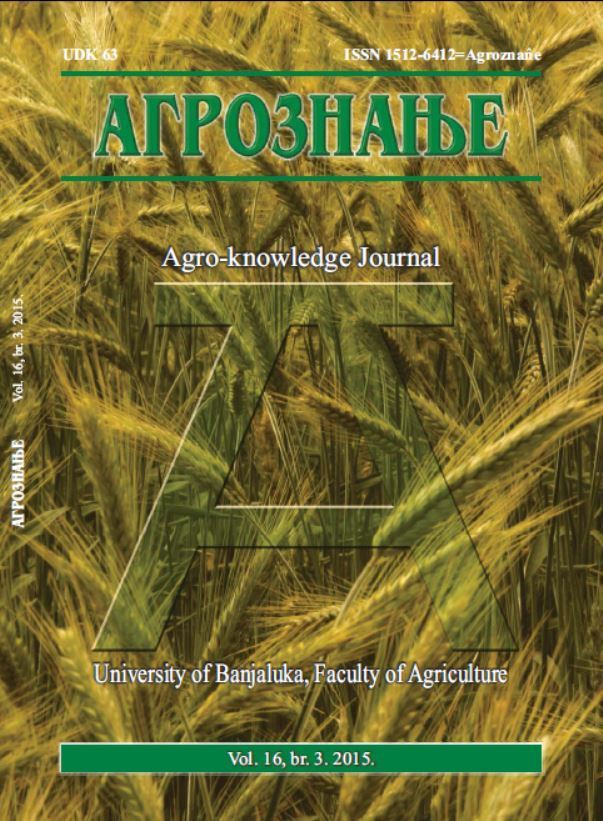Utilization of Plant Genetic Resources in Peanut Breeding Program of Bulgaria
DOI:
https://doi.org/10.7251/AGREN1503289SAbstract
Based on study of some morphological indices, responsible for productivity in 97 breeding lines Arachis hypogea L. with Bulgarian origin, a linear regression model of the plant, that is characterized with high seed yield, was established. The breeding program requires the identification of direct and indirect effects on productivity. By application of the Path Coefficient Analysis,it has been found that the higher yield plants must have low and extensive bush (i> 2,0). The local accessions of peanuts are characterized by a lower index of the bush (i <2,0). For this purpose, 399 genotypes with different geographical origin were introduced from USDA (USA) in 2008. Based on the evaluation of foreign accessions by height and width of the plant, seed yield from one plant and resistance to Fusarium, four genotypes were selected. They were included in crosses with Bulgarian varieties and lines of Valencia type. The heterosis expressions and some genetic effects of progenies were studied.The results show that heterosis effect in F1at some of the progenies in connection withyield of the fruit and seeds are inherited without epistatic effect. The inbred depression in F2is an indication of homozygosity in respect of allelic pairs defining yield.Downloads
Published
2016-04-18
Issue
Section
Articles

